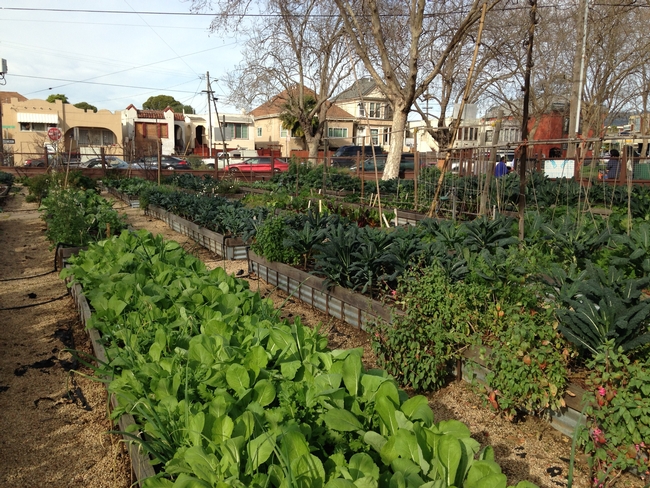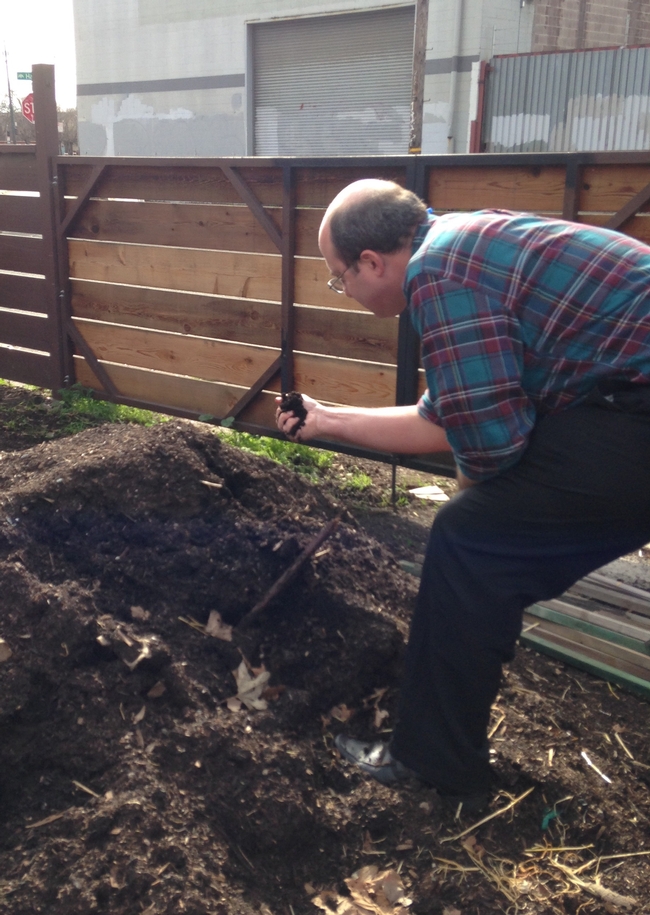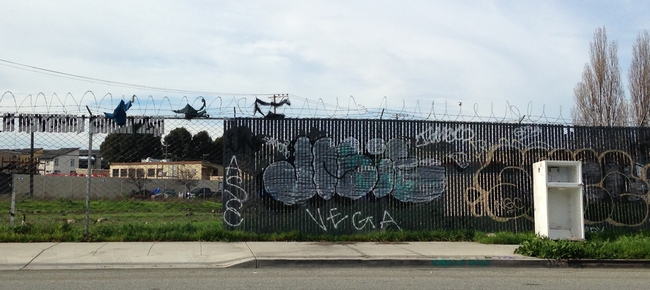
To find out how to help people who want to grow food in their communities in California, Rachel Surls, a UC Agriculture and Natural Resources Cooperative Extension advisor, and several UC ANR colleagues interviewed urban farmers as part of a statewide study of urban agriculture needs.
Surls, who specializes in sustainable food systems in Los Angeles County, and her colleagues identified several common challenges that UC ANR and local governments could address to cultivate a more urban agriculture-friendly environment.
In an op-ed published March 24 in the Sacramento Bee, Surls listed the following six things that local officials could do to encourage urban farming:
- Make zoning and regulatory information accessible
 Rob Bennaton, UC Cooperative Extension advisor, helps urban farmers test soil in Alameda County.
Rob Bennaton, UC Cooperative Extension advisor, helps urban farmers test soil in Alameda County. - Develop a transparent process for use of city-owned land
- Create an urban agriculture incentive zone
- Update zoning to make it urban-ag friendly
- Make water accessible while promoting efficient use
- Provide guidance and support for soil testing and remediation.
There seems to be growing interest in cities encouraging urban farming. For example, last year Oakland updated its city codes to allow planting of community gardens in most zones of the city without obtaining a special permit. San Diego has made it easier for residents to keep chickens and bees in their backyards. The Sacramento City Council recently voted to allow residents to farm on urban lots and sell produce they grow at farm stands. And now, Santa Clara County is considering tax breaks for property owners who allow crops to be planted on their unused parcels.
Urban farmers told the researchers that UC ANR could help by providing educational materials on topics such as pest management, water management, design of community urban agriculture projects and soil testing and remediation.
To begin providing the public with information about urban agriculture, UC ANR has created a website at http://ucanr.edu/urbanag. Visitors to the website will find science-based information on raising crops and livestock, selling farm products and links to policies for farming in a backyard, at a school or a community garden.
“Many urban farmers are beginning farmers so the website offers basic information on planting, pests and irrigation, and on navigating local laws and regulations that impact farming,” said Surls. “But the website is also intended to be a resource for policymakers who are making decisions that impact local farming in their cities.”
For the latest information about urban farming, visit http://ucanr.edu/urbanag and follow @UCurbanag on Twitter.
The University of California Global Food Initiative aims to put the world on a path to sustainably and nutritiously feed itself. By building on existing efforts and creating new collaborations among UC's 10 campuses, affiliated national laboratories and the Division of Agriculture and Natural Resources, the initiative will develop and export solutions for food security, health and sustainability throughout California, the United States and the world.

